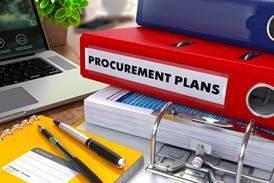The great advantage of plastics is their diversity of types and properties. Sadly, this is also the biggest obstacle to recycling them.
It’s simply never going to be economic to sort out all the millions of plastic items disposed of every day into all the thousands of grades, let alone recycle them all separately.
However, if we can make something useful out of this mixed waste, using low capital investment, it will become worthwhile to salvage it. Not only will this rescue plastic from landfill, but it will also give us the chance to unlock valuable polymers. At the end of their life, the re-made plastic objects could be depolymerised into a petroleum form, from which speciality polymers can again be made.
There are emerging processes that can make useful, comparatively low-performance products out of mixed plastic waste. The key is designing with this type of material in mind. It tends to produce objects with thick wall sections and the control of structural properties is not very precise. But it can be perfectly good enough for transport pallets, site hoarding, railway sleepers, work boats, barge covers and hundreds of other applications that are yet to be found.
Designing products for this class of material and their manufacturing process is an area few people are yet working in and it needs some adjustment from the usual methods for designing in plastics. At Arup, we have been working with one such technology, the powder impression moulding (PIM) process, and have learned a great deal from designing a stadium seat in this way.
If we can think of plastics as having this sort of two-stage life cycle, it gives me a glimmer of hope for solving the issue of plastic debris in the ocean, which the United Nations Environment Programme (UNEP) has described as a “wicked problem”. The quantity of floating plastic debris is estimated in the hundreds of millions of tonnes. That scale of material sounds like a resource to me, so what useful things could be made from salvaged marine plastics using PIM or other mixed plastics processes?
And how could we collect the plastics for processing? The plastic in the oceans accumulates along the high water mark and in a number of regions known as gyres. The largest of these is the North Pacific Gyre, (also known as the Eastern Garbage Patch). Is a resource like this worth trawling for?
Before long, someone will find a way to make it economic to collect this debris and make a useful thing that pays for itself and eventually is desirable for de-polymerisation and re-synthesis. In the meantime, one class of plastics that stands out and to a limited extent is already being selected and recycled is polyethylene terephthalate (PET).
Known as polyester in fibre form and PET in blow-moulded bottle form, these plastics are very easily recycled into products of near enough original quality. The most well known example is the soft drinks bottle, where at least one company sells some of its product in bottles made from recycled PET.
Right now, there is a competition called Capturing Gold to invent new ways to capture and re-use huge amounts of PET. The top ideas will be presented at Plasticity 2012, a side event to the World Earth Summit in Rio, and I would encourage you to look at the ideas when they are available.




















No comments yet